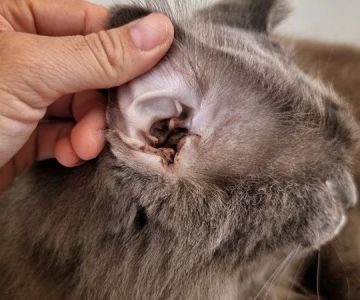- 1. What is a Cat Urinary Tract Infection (UTI)?
- 2. Common Symptoms of UTIs in Cats
- 3. Treatment Options for Cats with UTIs
- 4. Preventing Urinary Tract Infections in Cats
- 5. Real-Life Example: A Cat’s Journey with a UTI
- 6. Conclusion: Keeping Your Cat’s Urinary Health in Check
1. What is a Cat Urinary Tract Infection (UTI)?
A urinary tract infection (UTI) in cats is an infection in any part of the urinary system, including the kidneys, bladder, ureters, or urethra. UTIs are a common health issue in cats and can cause a variety of symptoms that may range from mild discomfort to severe pain. Understanding UTIs is crucial for cat owners, as they can lead to more serious conditions if left untreated.
UTIs in cats are typically caused by bacteria that enter the urinary tract through the urethra. Once inside, these bacteria can multiply and cause inflammation and infection. While UTIs are more common in older cats, they can affect cats of any age, breed, or gender. Female cats are more prone to UTIs than males, but both genders are susceptible.

Bannon Woods Veterinary Clinic: Adrienne Robertson DVM
LouisvilleJefferson CountyKentucky
11116 Dezern Ave, Fairdale, KY 40118, USA
2. Common Symptoms of UTIs in Cats
Recognizing the symptoms of a UTI in your cat is essential for timely treatment. Here are some common signs to watch out for:
2.1 Frequent Urination
One of the most common signs of a UTI in cats is frequent urination. Cats with a UTI may attempt to urinate more often than usual, but they may only pass small amounts of urine each time. If you notice your cat frequently using the litter box without producing much urine, a UTI could be the cause.
2.2 Painful Urination
If your cat is experiencing pain or discomfort while urinating, it’s a clear sign of a UTI. You may notice your cat straining to urinate or meowing while doing so. Cats may also exhibit signs of distress or agitation when they are unable to urinate properly.
2.3 Blood in the Urine
Blood in the urine is a concerning symptom of a UTI. If you notice that your cat’s urine is pink or red, it could indicate that the infection has caused damage to the bladder or urethra. This requires immediate veterinary attention.
2.4 Licking the Genital Area
Excessive licking of the genital area is another symptom of a UTI in cats. If your cat is frequently licking or cleaning itself in this area, it may be an indication that it is experiencing discomfort or irritation due to the infection.
2.5 Behavioral Changes
UTIs can cause behavioral changes in cats. A cat in pain may become more irritable, hide more often, or show a decrease in appetite. If your cat is acting out of character, it’s important to consider the possibility of a UTI.
3. Treatment Options for Cats with UTIs
Once a UTI is diagnosed in a cat, it’s essential to start treatment as soon as possible. Treatment for UTIs in cats typically involves antibiotics to eliminate the bacterial infection. However, the treatment approach can vary depending on the severity of the infection and the overall health of the cat.
3.1 Antibiotics
Antibiotics are the most common treatment for UTIs in cats. Your veterinarian will prescribe a course of antibiotics based on the type of bacteria causing the infection. It’s important to follow the prescribed treatment plan and finish the entire course of antibiotics, even if your cat seems to be feeling better before the treatment is complete.
3.2 Pain Relief
If your cat is experiencing pain due to the UTI, your veterinarian may recommend pain relief medications to make your cat more comfortable during the healing process. Pain relief is essential for helping your cat recover more quickly and reducing discomfort while urinating.
3.3 Diet Changes
In some cases, changing your cat’s diet can help promote urinary health and prevent future infections. Special diets formulated to support urinary tract health may be recommended, as they can help prevent the formation of crystals in the bladder, which can contribute to UTIs.
3.4 Increased Water Intake
Increasing your cat’s water intake can help flush bacteria out of the urinary system. You can encourage your cat to drink more water by offering fresh water regularly and considering the use of a pet water fountain, which many cats find more appealing than a stagnant bowl.
4. Preventing Urinary Tract Infections in Cats
While it may not always be possible to prevent UTIs entirely, there are steps you can take to reduce the risk of infections in your cat. Here are some tips for maintaining your cat’s urinary health:
4.1 Provide Fresh Water at All Times
Ensuring that your cat has access to fresh, clean water at all times is one of the best ways to prevent UTIs. Proper hydration helps keep the urinary tract flushed and reduces the likelihood of bacterial growth. Cats who drink more water are less likely to develop urinary issues.
4.2 Maintain a Healthy Diet
A balanced, high-quality diet is crucial for your cat’s overall health, including urinary health. Some cat foods are specifically formulated to support urinary tract health and reduce the risk of UTIs. Consult your veterinarian for recommendations on the best diet for your cat’s specific needs.
4.3 Regular Litter Box Cleaning
Keep your cat’s litter box clean and dry. A dirty litter box can encourage bacteria growth and increase the likelihood of infection. Regular cleaning, along with providing enough litter boxes for multiple cats, can help ensure a hygienic environment for your pet.
4.4 Stress Reduction
Stress can contribute to urinary issues in cats, so it's important to create a calm and comfortable environment. Providing your cat with plenty of hiding spots, vertical spaces, and stimulation can help reduce stress and prevent related urinary problems.
5. Real-Life Example: A Cat’s Journey with a UTI
One of my friends, Sarah, had a cat named Whiskers who had suffered from recurring UTIs. At first, Sarah didn’t realize what was causing Whiskers’ frequent trips to the litter box, but after noticing blood in the urine, she took him to the vet. It turned out Whiskers had a UTI, and with a round of antibiotics and some dietary changes, he recovered quickly. Sarah also started using a water fountain for him and ensured he always had access to clean water, which greatly reduced his risk of future infections.
This experience highlights how important it is to be proactive when it comes to recognizing the signs of a UTI in your cat and seeking treatment promptly. Sarah's dedication to maintaining a healthy environment for Whiskers helped keep him happy and UTI-free for the long term.
6. Conclusion: Keeping Your Cat’s Urinary Health in Check
Understanding and addressing cat urinary tract infections is crucial for your cat’s health and well-being. By recognizing the symptoms early, seeking appropriate treatment, and taking preventive steps, you can help keep your cat's urinary system in optimal condition. Regular veterinary check-ups, a balanced diet, and stress reduction all contribute to your cat’s overall health and reduce the likelihood of future UTIs.
If you're looking for products that can support your cat’s urinary health, be sure to check out Pet & Puppy for high-quality food, supplements, and other recommendations. Ensuring your cat’s urinary health can lead to a happier, healthier life for your furry friend!








 Desert Hills Animal Hospital4.0 (252 reviews)
Desert Hills Animal Hospital4.0 (252 reviews) Bruns Animal Clinic, LTD4.0 (415 reviews)
Bruns Animal Clinic, LTD4.0 (415 reviews) Veterinary Acupuncture and Alternative Medicine in Phoenix5.0 (30 reviews)
Veterinary Acupuncture and Alternative Medicine in Phoenix5.0 (30 reviews) Aztec Animal Hospital4.0 (161 reviews)
Aztec Animal Hospital4.0 (161 reviews) Harrison Animal Hospital4.0 (834 reviews)
Harrison Animal Hospital4.0 (834 reviews) UrgentVet4.0 (184 reviews)
UrgentVet4.0 (184 reviews) What Breed-Specific Health Issues You Should Be Aware Of
What Breed-Specific Health Issues You Should Be Aware Of How to Celebrate Pet Holidays: Fun Ideas & Safety Tips
How to Celebrate Pet Holidays: Fun Ideas & Safety Tips How to Stop Cats from Scratching Furniture: Effective Tips and Products
How to Stop Cats from Scratching Furniture: Effective Tips and Products Leash Pulling in Dogs: Causes & Effective Correction Techniques
Leash Pulling in Dogs: Causes & Effective Correction Techniques How to Handle Pet Jealousy When You Have More Than One
How to Handle Pet Jealousy When You Have More Than One What to Do After a Pet Emergency: Step-by-Step Guide
What to Do After a Pet Emergency: Step-by-Step Guide